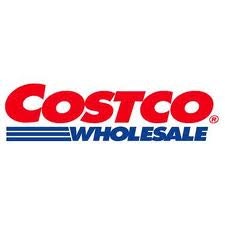The relatively high price to earnings ratio of Costco Wholesale Corporation (NASDAQ:COST) compared to other leading big retailers hasn’t gone by unnoticed. The company’s stable growth in revenues and rise in stock price keeps investors drawn to this stock. Is it worth owning? Let’s examine the latest developments in the retail market and the performance of Costco compared to its leading competitors.
Retail sales continue to rise
According to the latest retail sales report, total U.S retail sales rose again by 0.6% in May compared to April 2013 and by 4.3% compared to May 2012. Moreover, during the first five months of 2013 net sales grew by more than 3.7%. Since prices (based on the U.S general CPI) grew by roughly 0.2% during the first five months of 2013, this means most of the growth in sales wasn’t driven by price gains but by increased demand. If this growth persists in retail sales, it could mean revenues of leading retailers such as Wal-Mart Stores, Inc. (NYSE:WMT) will keep rising.

Is the international segment helping?
Most of Wal-Mart Stores, Inc. (NYSE:WMT)’s growth in revenues these days is coming from its international segment: In the first quarter of 2013, international sales grew by 2.9%; Wal-Mart’s U.S sales inched up by only 0.3%. On the other hand, the international business segment is less profitable than the domestic segment: The profit margin of domestic business is around 8%, while international business is less than 4%. If the international segment will continue to rise at a faster pace than the domestic business, we could see an additional drop in Wal-Mart’s profit margin. Furthermore, currency risks will take a larger toll on revenues as the company’s international business continues to expand.
Costco Wholesale Corporation (NASDAQ:COST) isn’t any different, and the currency risks are pulling back the company’s revenues. On the other hand, Costco’s international segment is growing at nearly the same pace as the U.S business segment. So for Costco, unlike Wal-Mart Stores, Inc. (NYSE:WMT), the international segment isn’t the driving force behind its growth in revenues.
Company valuation
Let’s examine the above-mentioned retailers’ EV to EBIT ratios, which will give a better understanding of their relative prices.
The table below shows the summery of data of all three companies and the average Retail/Wholesale Food industry.

This calculation accounts for these companies’ financial structure. The yearly EBIT is based on the past four quarters. As seen, the EV to EBIT ratio of Wal-Mart Stores, Inc. (NYSE:WMT) and Target Corporation (NYSE:TGT) is close to the industry average. On the other hand, Costco Wholesale Corporation (NASDAQ:COST)’s current EV to EBIT ratio is relatively high for the industry. This suggests the company’s current price might be a bit high for the industry. The higher growth in revenues of this company compared to the industry partly explains this issue. Nonetheless, this company’s current valuation isn’t a bargain.
Dividend and buyback
The higher profit margins of Wal-Mart Stores, Inc. (NYSE:WMT) and Target Corporation (NYSE:TGT) are reflected in these companies’ dividend payments, offering annual yields of 2.5% and 2.42%, respectively. Costco Wholesale Corporation (NASDAQ:COST) has a much lower dividend payment that results in an annual yield of 1.1%. Moreover, Wal-Mart recently approved a $15 billion stock buyback program that will benefit its investors and lower the dividends it needs to pay. Considering the low interest rates, the company could save millions of dollars by exchanging equity for debt. But this also suggests the company is putting its resources towards buybacks and not towards developing new businesses. Therefore, Wal-Mart isn’t likely to show much growth in revenues in the near future.
Takeaway
Costco Wholesale Corporation (NASDAQ:COST) is likely to keep augmenting its businesses at a much faster pace than other leading retailers. But the company’s low profit margin, low dividend yield and relatively high valuation might make this company less attractive for those who seek stocks that offer these characteristics. Wal-Mart Stores, Inc. (NYSE:WMT) and Target Corporation (NYSE:TGT) might offer fewer thrills, but also a steady flow of dividend payments, albeit with minimal growth and slowly descending profit margins.
Lior Cohen has no position in any stocks mentioned. The Motley Fool recommends Costco Wholesale. The Motley Fool owns shares of Costco Wholesale.
The article The Good and the Bad of This Retail Stock originally appeared on Fool.com.
Copyright © 1995 – 2013 The Motley Fool, LLC. All rights reserved. The Motley Fool has a disclosure policy.



